On March 15, the people of Saxony looked to Santa Clara with a smile and a tear in their eye. On that day, Intel CEO Pat Gelsinger announced to the world via an online press conference that he would be building his next two mega chip factories in Magdeburg - and not in Dresden, as had long been hoped in the Free State of Saxony. Saxony-Anhalt's Minister President Reiner Haseloff rightly spoke of a 'quantum leap' for his state. In addition, this major investment will significantly raise the status of the microelectronics industry in Germany.
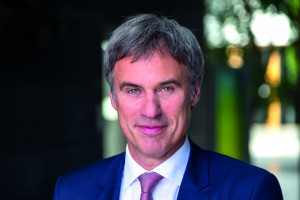 Bitkom President Achim Berg sees great opportunities for Germany as a business locationAllindustry experts agreethatthe US semiconductor giant's €17 billion investment in Saxony-Anhalt is a huge opportunity for the economy on a much larger scale. "Another semiconductor ecosystem will be created around the university city, which will strengthen Germany as a location overall," commented Achim Berg, President of the German digital industry association Bitkom in Berlin, on the Intel announcement. "It is also an important step towards meeting the constantly growing demand for high-performance processors in Europe." The ongoing semiconductor supply crisis is a major burden for the entire German economy: it has not only affected the automotive industry, which has repeatedly had to stop its production lines due to chip bottlenecks, but also the entire electrical and electronics industry, mechanical engineering companies and consumer goods manufacturers. "Now is the time to set the course to reduce dependency on semiconductor imports in the future and build up our own capabilities and capacities," emphasized Berg.
Bitkom President Achim Berg sees great opportunities for Germany as a business locationAllindustry experts agreethatthe US semiconductor giant's €17 billion investment in Saxony-Anhalt is a huge opportunity for the economy on a much larger scale. "Another semiconductor ecosystem will be created around the university city, which will strengthen Germany as a location overall," commented Achim Berg, President of the German digital industry association Bitkom in Berlin, on the Intel announcement. "It is also an important step towards meeting the constantly growing demand for high-performance processors in Europe." The ongoing semiconductor supply crisis is a major burden for the entire German economy: it has not only affected the automotive industry, which has repeatedly had to stop its production lines due to chip bottlenecks, but also the entire electrical and electronics industry, mechanical engineering companies and consumer goods manufacturers. "Now is the time to set the course to reduce dependency on semiconductor imports in the future and build up our own capabilities and capacities," emphasized Berg.
An entire ecosystem will attach itself to Intel's Megafabs
Economic politicians and industry representatives in 'Silicon Saxony' also agree that the new Intel hub will have enormous appeal for the whole of Europe. After all, chip factories don't just spring up out of nowhere, they need an entire ecosystem of equipment suppliers, suppliers of systems, specialty gases and process chemicals, logistics companies, training companies, young academics, design houses, customers and so on and so forth. In this respect, it can be expected that each of the 3,000 jobs that Pat Gelsinger has promised for the two Magdeburg chip factories will result in one and a half to three times as many jobs in the wider area. In addition, Intel intends to operate both fabs not only for Intel products, but also as foundries, i.e. as contract manufacturers for chips. In future, industrial customers throughout Europe will therefore benefit from a new 'local source' for the latest generation of chips.
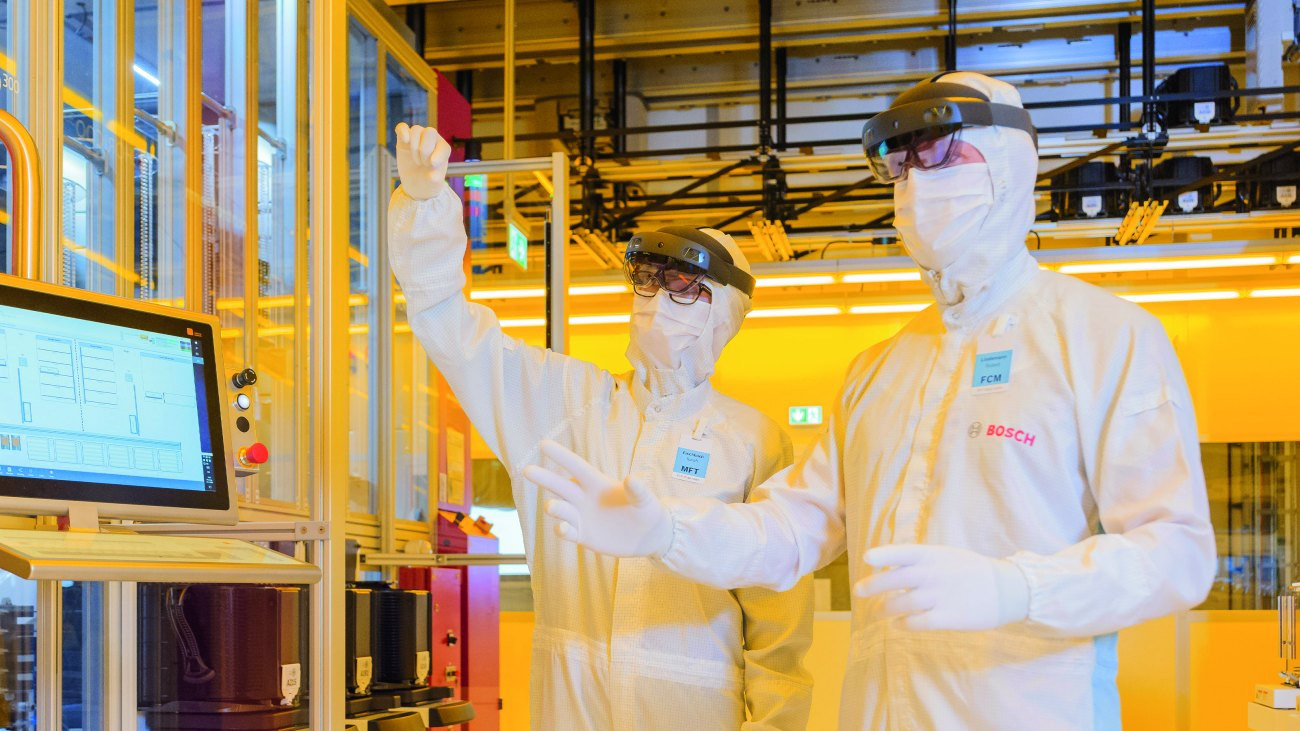 The job profiles of chipmakers have changed dramatically: Use of AR data glasses in the Bosch semiconductor factory in Dresden
The job profiles of chipmakers have changed dramatically: Use of AR data glasses in the Bosch semiconductor factory in Dresden
Quite apart from this, the Intel settlement in Saxony-Anhalt also builds a bridge between two microelectronics locations that were already closely linked in GDR times: There is the Dresden semiconductor cluster with its 60-year tradition on the one hand and the East German processor factories in Erfurt on the other, which were merged into the specialty chip foundry X-Fab after reunification. With the new Magdeburg link, this is now growing together to form a high-performance semiconductor belt in the middle of Germany.
Medium-sized companies are the big winners
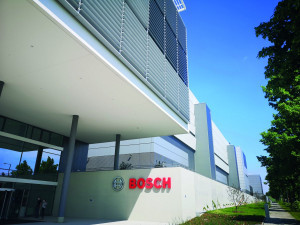 The Saxon industry association 'Silicon Saxony' also sees the resulting benefits for Germany as a business location: "This is a tremendous gain for Europe's leading high-tech cluster and all members of our industry association," commented CEO Dirk Röhrborn in Dresden on the Intel decision. The move will help to increase the competitiveness of the European semiconductor industry and strengthen the technological sovereignty of the EU in the long term. And: "Above all, the medium-sized companies that will support Intel in setting up production as suppliers right on their doorstep are the big winners."
The Saxon industry association 'Silicon Saxony' also sees the resulting benefits for Germany as a business location: "This is a tremendous gain for Europe's leading high-tech cluster and all members of our industry association," commented CEO Dirk Röhrborn in Dresden on the Intel decision. The move will help to increase the competitiveness of the European semiconductor industry and strengthen the technological sovereignty of the EU in the long term. And: "Above all, the medium-sized companies that will support Intel in setting up production as suppliers right on their doorstep are the big winners."
Apart from that, the Silicon Saxony region can still hope for the 'consolation prize': The world's largest semiconductor contract manufacturer TSMC from Taiwan is also flirting with the idea of building a megafab in Europe. And Saxony is counting on its chances here.
However, with all these relocation requests and major investments, universities, companies and business promoters throughout Central Germany will have to work hard to generate enough skilled workers for the new and established high-tech companies - a problem that was already addressed in the previous PLUS report from Dresden.
However, it is not only quantitative issues relating to young talent due to the ageing of our society that play a role here, but also a qualitative change in job profiles in the chip factories, for which schools or vocational and academic training centers have so far been little prepared. This, at least, is what emerged during the virtual symposium 'Factory of the Future' in Dresden. According to this, hyperautomation in European microelectronics is ensuring that highly qualified digital 'universalists' are increasingly in demand.
Hyperautomation is changing job profiles
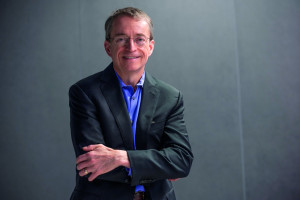 Wants to invest heavily in Magdeburg: Intel CEO Pat GelsingerIn short, this means that today's ideal chip factory employee is a specialist in information technology with in-depth knowledge of microelectronics and mechanical engineering and an "intercultural education", as at least Prof. Dirk Reichelt from the Dresden University of Applied Sciences (HTW) and Christian Koitzsch, head of the Dresden Bosch chip factory, have described it.
Wants to invest heavily in Magdeburg: Intel CEO Pat GelsingerIn short, this means that today's ideal chip factory employee is a specialist in information technology with in-depth knowledge of microelectronics and mechanical engineering and an "intercultural education", as at least Prof. Dirk Reichelt from the Dresden University of Applied Sciences (HTW) and Christian Koitzsch, head of the Dresden Bosch chip factory, have described it.
"In the beginning, we mainly hired people with a lot of semiconductor experience," reports Koitzsch. "Now it's more IT specialists." Conversely, semiconductor or mechanical engineers should preferably also be able to program in the Python language and understand physics and statistics. In addition, the ability to work with people from other cultural backgrounds in international teams is particularly important alongside technical qualifications.
Background: In the past, thousands of 'operators' or other skilled workers often operated and loaded the production systems in a typical chip factory, but nowadays the megafabs are so highly automated that there are often only a few dozen people per shift in the clean room. At Bosch Dresden, for example, the production halls are almost deserted. Sunday shifts are often run with just ten employees. However, they have to be as familiar as possible with all the technology used and then be able to carry out system assembly and maintenance with the help of data glasses for 'augmented reality' (AR), for example.
Microelectronics research laboratories take stock in Dresden
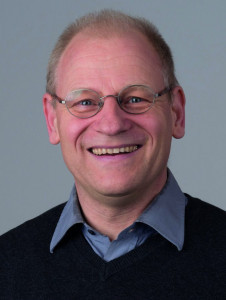 Prof. Thomas MikolajickAnotherbuilding block for the expansion of Central Germany as a microelectronics location is the research environment - and a lot has happened here in recent years, particularly in terms of semiconductor technologies. Three years ago, for example, 14 German universities came together to form the 'Forschungslabore Mikroelektronik Deutschland' (ForLab) network, coordinated by Prof. Thomas Mikolajick from the 'Namlab' at Dresden University. At the end of March 2022, they took stock in Dresden. During the symposium 'Microelectronics research in Germany: from fundamentals to application', the experts will discuss, for example, the progress made in research and development in spintronics, the development of practical memristors, new materials in power electronics, new semiconductor components based on 2D materials, high-frequency electronics, nanowires for packaging technology and new developments in organic electronics.
Prof. Thomas MikolajickAnotherbuilding block for the expansion of Central Germany as a microelectronics location is the research environment - and a lot has happened here in recent years, particularly in terms of semiconductor technologies. Three years ago, for example, 14 German universities came together to form the 'Forschungslabore Mikroelektronik Deutschland' (ForLab) network, coordinated by Prof. Thomas Mikolajick from the 'Namlab' at Dresden University. At the end of March 2022, they took stock in Dresden. During the symposium 'Microelectronics research in Germany: from fundamentals to application', the experts will discuss, for example, the progress made in research and development in spintronics, the development of practical memristors, new materials in power electronics, new semiconductor components based on 2D materials, high-frequency electronics, nanowires for packaging technology and new developments in organic electronics.
However, these scientific and technological successes alone will not be enough to remain competitive and enable new large-scale settlements. Rather, Saxony will have to face further challenges in the coming years. We are talking about location requirements such as a stable water supply or an environmentally conscious yet reliable power supply, which are not as self-evident in Central Europe as has always been assumed. Just think of the discussions about the water consumption of the Tesla car factory in Grünheide or the latest energy price shocks since the Russian attack on Ukraine.
In order to open up new areas for large factories in the wider Dresden area, Sachsenenergie boss Frank Brinkmann recently proposed a very special pipeline for eastern Saxony: this would not bring oil or natural gas, but rather masses of water from the Elbe Valley to Lusatia, which has been parched by decades of opencast lignite mining. The CEO of the Dresden-based energy supplier emphasized that this was also necessary in view of possible chip factory settlements in the coalfields. A stable and efficient water supply is "a decisive prerequisite for the expansion of water-intensive chip production, for example". The aim is to put the preservation and further development of Silicon Saxony on a solid footing.
Chip factories on course for self-sufficiency
 The Helmholtz researchers in Rossendorf store their liquid sodium in special tanks like these Meanwhile, more and more chip factories in Saxony are moving towards - at least partial - self-sufficiency in their own electricity, heating and cooling supplies. They want to arm themselves against incidents like the one in September 2021, when a banal toy balloon triggered a major power outage in Dresden and partially paralyzed several semiconductor plants. Globalfoundries' Megafab, which has had its own power plant for years - and has since announced a modernization of these 'Energy Supply Centers' (EVC) for a double-digit million sum - was only marginally affected.
The Helmholtz researchers in Rossendorf store their liquid sodium in special tanks like these Meanwhile, more and more chip factories in Saxony are moving towards - at least partial - self-sufficiency in their own electricity, heating and cooling supplies. They want to arm themselves against incidents like the one in September 2021, when a banal toy balloon triggered a major power outage in Dresden and partially paralyzed several semiconductor plants. Globalfoundries' Megafab, which has had its own power plant for years - and has since announced a modernization of these 'Energy Supply Centers' (EVC) for a double-digit million sum - was only marginally affected.
During the aforementioned conference on the 'factory of the future', Dresden-based Bosch factory boss Koitzsch also announced his intention to move towards self-sufficiency in the coming years. Among other things, he wants to install solar panels on the factory premises, but also use fuel cell technology from his own company for a hydrogen-based power supply. For him, however, it is not just concerns about grid outages that play a major role, but also sustainability considerations. "We are alreadyCO2-neutral in terms of our balance sheet, and in future we also want to achieve localCO2 neutrality," he said.
Liquid metal batteries for the energy transition
As soon as solar or wind power is used to secure a factory's basic power supply, the topic of temporary electricity storage quickly comes onto the agenda - because the sun and wind deliver their energy too intermittently. The Helmholtz-Zentrum Dresden-Rossdorf is currently developing fascinating solutions for this: using liquid sodium, zinc and other comparatively inexpensive metals, they want to build hot molten salt accumulators that can handle far more charging cycles than conventional batteries - at lower costs. This concept also allows lithium, cobalt and other rare metals to be saved. Above all, however, these batteries are designed for a circular economy: "At the end of its life, the battery is charged and cooled down," explain the researchers. "The salt solidifies and the lithium is available as a solid metal. The individual materials can be removed and returned to the economic cycle." Here, too, the concept of sustainability is playing an increasingly important role.
Robots print car wiring harnesses
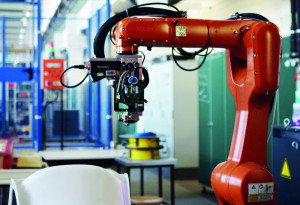 FhG-ENAS and TU Chemnitz are working closely together on the 3D printing project: Test setup at the TU with Kuka robot including attached inkjet print head, triangulation sensor and depth cameraOtherresearch projects could potentially provide solutions in the future for problems that - shortly after the chip supply crisis - have once again temporarily paralyzed VW's electric car factories in Saxony: Because people in Ukraine are busy with completely different things at the moment, there are practically no more cable harness supplies coming from the supplier factories there. Although the Fraunhofer-Gesellschaft cannot offer any short-term alternatives, it is working on medium and long-term solutions. For example, a project by the Institute of Electronic Nano Systems (Enas) could provide more resilience: at the Lopec electronics printing trade fair, the engineers from Chemnitz demonstrated a 6-axis industrial robot with a special processing head that can print electrical and electronic structures on curved surfaces - including wiring harnesses for cars.
FhG-ENAS and TU Chemnitz are working closely together on the 3D printing project: Test setup at the TU with Kuka robot including attached inkjet print head, triangulation sensor and depth cameraOtherresearch projects could potentially provide solutions in the future for problems that - shortly after the chip supply crisis - have once again temporarily paralyzed VW's electric car factories in Saxony: Because people in Ukraine are busy with completely different things at the moment, there are practically no more cable harness supplies coming from the supplier factories there. Although the Fraunhofer-Gesellschaft cannot offer any short-term alternatives, it is working on medium and long-term solutions. For example, a project by the Institute of Electronic Nano Systems (Enas) could provide more resilience: at the Lopec electronics printing trade fair, the engineers from Chemnitz demonstrated a 6-axis industrial robot with a special processing head that can print electrical and electronic structures on curved surfaces - including wiring harnesses for cars.
As a first application example, the Enas team printed heating structures and RFID radio labels on curved stadium seat shells. The researchers see the greatest potential in the automotive and mechanical engineering sectors and related industries. They believe that the use of printing technology on 3D objects is interesting for many industries: "In automotive engineering, it has been shown that printed conductor paths can be used not only to replace cable harnesses, but also to individually equip vehicle parts." A project team led by Enas demonstrated how printed conductors can supply power to switches and loudspeakers installed in the vehicle door. Industrial partners such as Chemnitz-based C-marx GmbH are already using this technology in system development.
Technologically, however, this spatially oriented 3D electronics printing is anything but trivial: "Only the sum of technological knowledge in combination enables us to realize the development of a technology offering for printing processes on 3D components," emphasizes project manager Professor Dr. Ralf Zichner. "This not only includes knowledge of the system design and the printing process itself, but also of pre- and post-treatment processes, ink selection and the design of electronic components."
Sources:
Intel, Silicon Saxony, Bitkom, Bosch, HTW DD,
"Factory of the Future" conference, Enas, HZDR, Oiger.de


